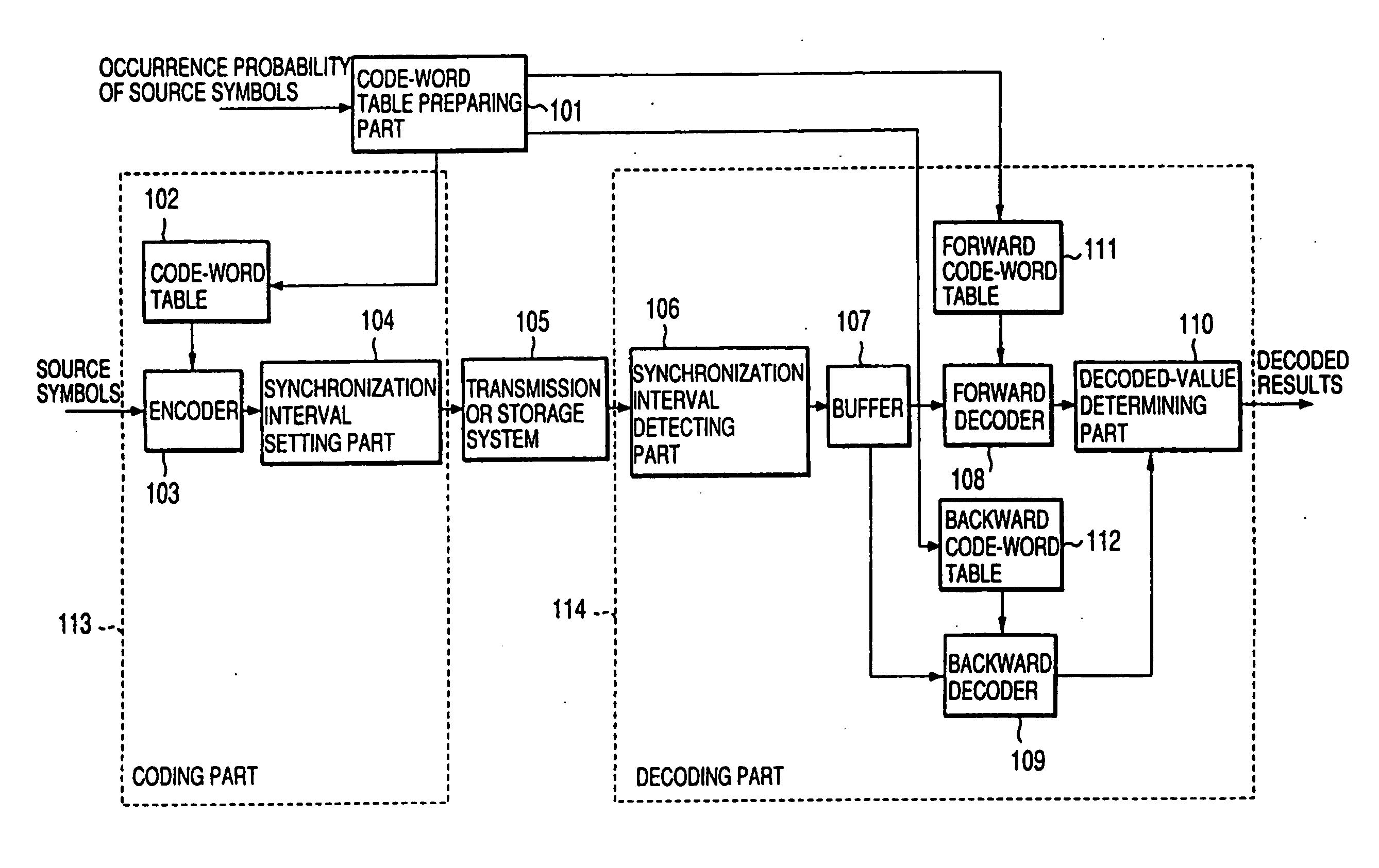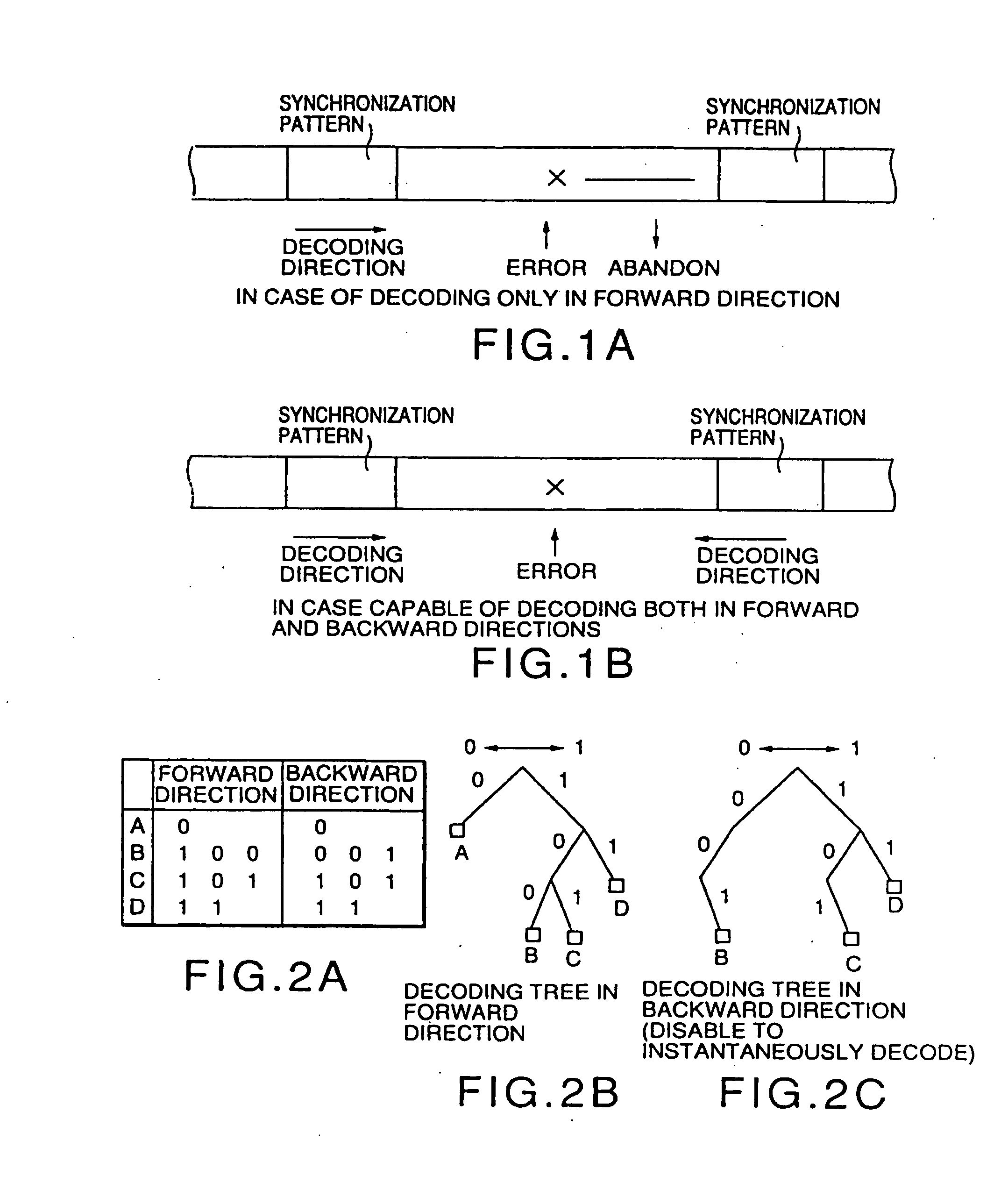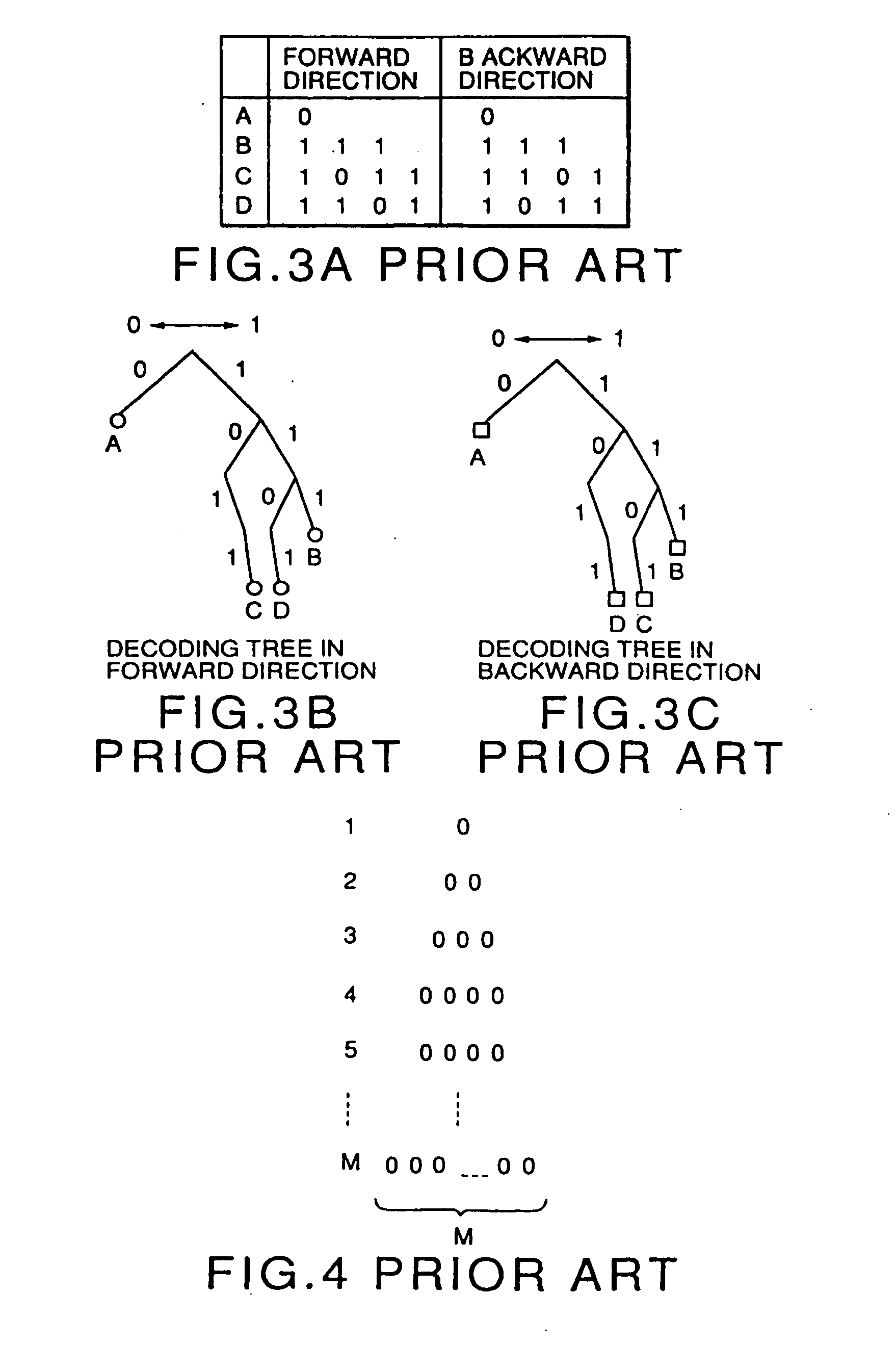Moving picture coding and/or decoding systems, and variable-length coding and/or decoding system
a coding and/or decoding system technology, applied in the field of moving picture coding and/or decoding systems, can solve the problems of coded data not being correctly decoded, reversible code contains many useless bits, and has a long average code length. , to achieve the effect of decoding to channel errors, enhancing coding efficiency, and high degree of freedom for bit patterns
- Summary
- Abstract
- Description
- Claims
- Application Information
AI Technical Summary
Benefits of technology
Problems solved by technology
Method used
Image
Examples
second preferred embodiment
[0173] As the second preferred embodiment of the present invention, an applied example of a variable length coding and / or decoding system according to the present invention will be described below.
[0174]FIG. 16 is a block diagram showing the concept of a moving picture coding and / or decoding system, which incorporates the second preferred embodiment of a variable length coding and / or decoding system according to the present invention. First, in a moving picture encoder 709, the variable length coding, multiplexing and so forth of data coded by a source encoder 702 are carried out by means of a moving picture multiplexer 703. Then, the resulting data are smoothed by means of a transmission buffer 704 to be transmitted to a transmission or storage system705 as coded data. A coding control part 701 controls the source encoder 702 and the moving picture multiplexer 703 in view of the buffer capacity of the transmission buffer 704.
[0175] On the other hand, in a moving picture 710, the ...
third preferred embodiment
[0191] Referring to FIG. 28, the third preferred embodiment of a variable length coding and / or decoding system, according to the present invention, will be described below.
[0192] In this third preferred embodiment, the variable length coding and / or decoding system generally comprises a code-word table preparing part 101, a coding part 113, a transmission or storage system 105 and a decoding part 121. First, the functions of the respective parts will be briefly described. The code-word table preparing part 101 prepares a code-word table on the basis of the occurrence probability of source symbols, and transmits code words to a code-word table 102 in the coding part 113 and to forward and backward code-word tables 111 and 112 in the decoding part 121. The coding part 113 encodes the source symbol to a variable length code, and outputs the variable length code to the transmission or storage system 105 as coded data. The decoding part 121 decodes the coded data inputted via the transmi...
fourth preferred embodiment
[0209] Referring to FIG. 35, the fourth preferred embodiment of a variable length coding and / or decoding system, according to the present invention, will be described below.
[0210] In the fourth preferred embodiment, the variable length coding and / or decoding system generally comprises a code-word table preparing part 201, a coding part 213, a transmission or storage system 205 and a decoding part 214. First, the functions of the respective parts will be briefly described.
[0211] The code-word table preparing part 201 prepares a code-word table on the basis of the occurrence probability of source symbols, to transmit code words to a code-word table in the coding part 213 and to forward and backward code-word tables in the decoding part 214.
[0212] The coding part 213 layers source symbols provided as input data, and encodes the input data every layer to variable length codes. Then, the coding part 213 multiplexes the variable length codes to output the multiplexed codes to the trans...
PUM
 Login to View More
Login to View More Abstract
Description
Claims
Application Information
 Login to View More
Login to View More - R&D
- Intellectual Property
- Life Sciences
- Materials
- Tech Scout
- Unparalleled Data Quality
- Higher Quality Content
- 60% Fewer Hallucinations
Browse by: Latest US Patents, China's latest patents, Technical Efficacy Thesaurus, Application Domain, Technology Topic, Popular Technical Reports.
© 2025 PatSnap. All rights reserved.Legal|Privacy policy|Modern Slavery Act Transparency Statement|Sitemap|About US| Contact US: help@patsnap.com



